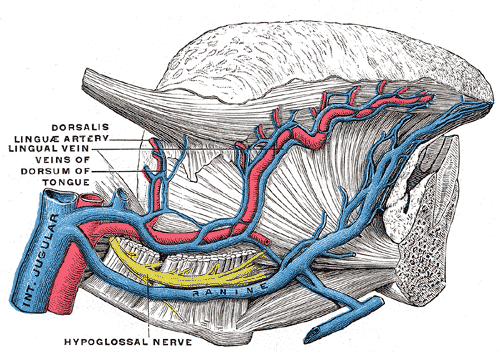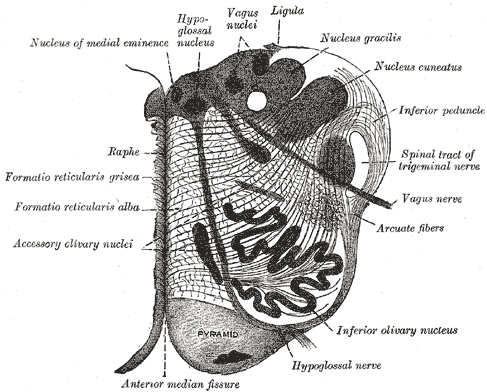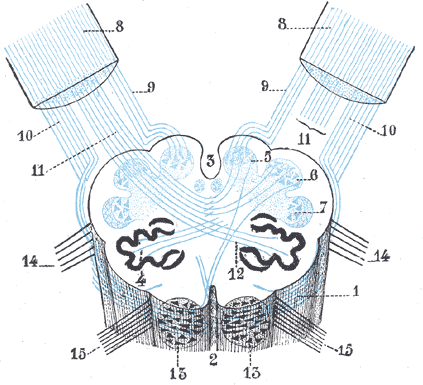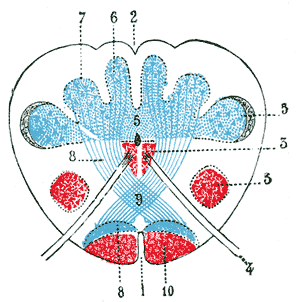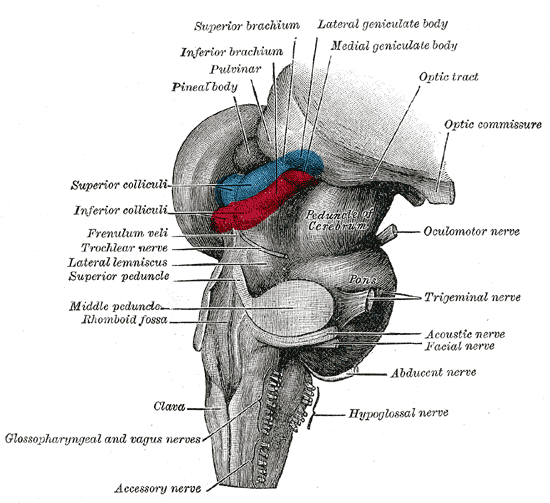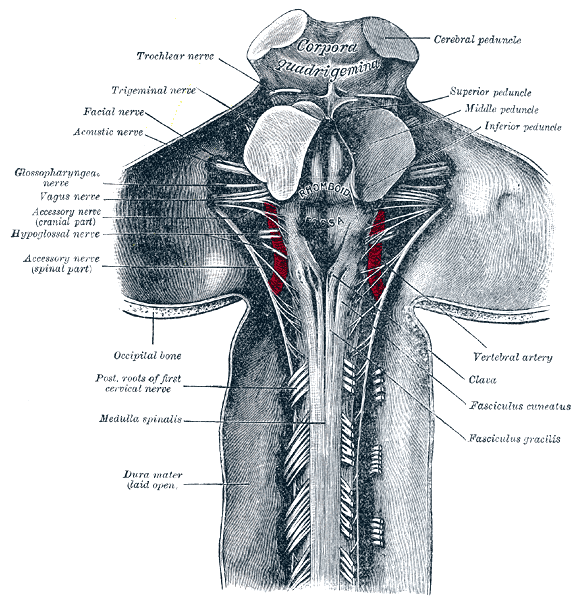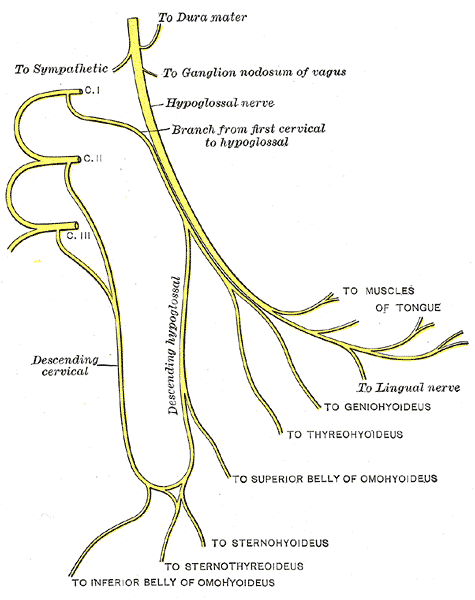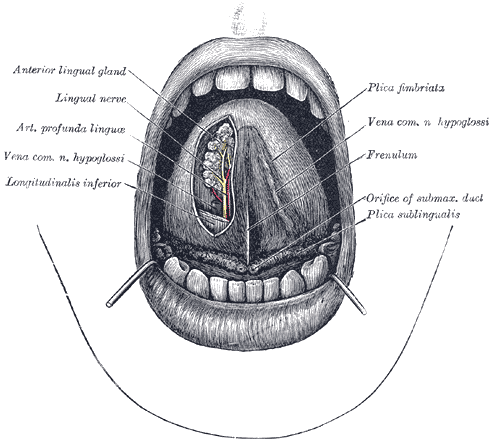Hypoglossal nerve
Template:Infobox Nerve Editor-In-Chief: C. Michael Gibson, M.S., M.D. [1]
Overview
The hypoglossal nerve is the twelfth cranial nerve (XII). The nerve arises from the hypoglossal nucleus and emerges from the medulla oblongata in the preolivary sulcus separating the olive and the pyramid. It then passes through the hypoglossal canal. On emerging from the hypoglossal canal, it gives off a small meningeal branch and picks up a branch from the anterior ramus of C1. It spirals behind the vagus nerve and passes between the internal carotid artery and internal jugular vein lying on the carotid sheath. After passing deep to the posterior belly of the digastric muscle, it passes to the submandibular region to enter the tongue.
It supplies motor fibres to all of the muscles of the tongue, except the palatoglossus muscle which is innervated by the vagus nerve (X).
Testing the hypoglossal nerve
To test the function of the nerve, a person is asked to poke out their tongue. If there is a loss of function on one side (unilateral paralysis) the tongue will point towards the affected side.
The strength of the tongue can be tested by getting the person to poke the inside of their cheek, and feeling how strongly they can push a finger pushed against their cheek - a more elegant way of testing than directly touching the tongue.
The tongue can also be looked at for signs of lower motor neuron disease, such as fasciculation and atrophy.
Ipsilateral paralysis/pareisis of the tongue, results in contralateral curvature of the tongue (toward the unimpaired side of the mouth).
Additional images
-
Veins of the tongue. The hypoglossal nerve has been displaced downward in this preparation.
-
Section of the medulla oblongata at about the middle of the olive.
-
Diagram showing the course of the arcuate fibers.
-
Transverse section passing through the sensory decussation.
-
Hind- and mid-brains; postero-lateral view.
-
Upper part of medulla spinalis and hind- and mid-brains; posterior aspect, exposed in situ.
-
Plan of hypoglossal nerve.
-
The mouth cavity.
External links
de:Nervus hypoglossus
it:Nervo ipoglosso
lt:Poliežuvinis nervas
nl:Nervus hypoglossus
no:Nervus hypoglossus
fi:Kielen liikehermo
